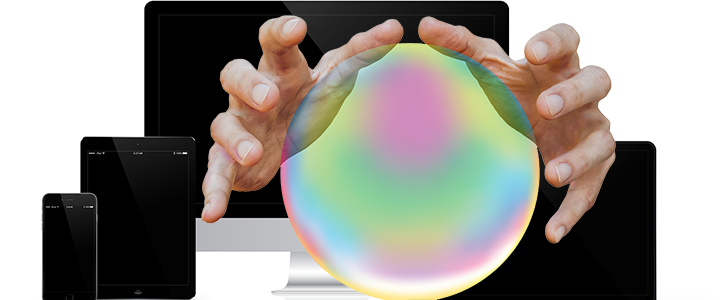The Future of Direct Advertising

As I sat on my laptop working while my daughter was home sick, she yelled at the TV, “Why are you showing me diapers when I don’t even wear diapers?” The commercial came on again when “Dora the Explorer” was over, and she got even more agitated. She’s 6 years old and expects advertising to know it’s her watching. She’s not concerned with privacy or what type of identity resolution technology would be involved to make that level of targeting happen.
I had to stop and wonder how personalized advertising can become fueled by emerging identification technology. Maybe it will take the form of facial recognition software identifying the content viewer to know what advertising will resonate with them. Will this ever be possible with privacy laws and privacy compliance in the United States? In 2019 though, the use of mobile devices surpassed TV, and the data supports that the future of advertising is all about going mobile.
We’ll see how that shakes out over time, but it can start to take shape now when cord cutters move to streaming Over the Top (OTT) content on their connected TVs or devices versus watching traditional TV or Cable.
OTT content streams through apps like Hulu, Roku, Sling, etc. These apps have a main account that funds the use of streaming content. In each app are profiles for each viewer, if the account owner took the time to set them up. Each profile is created with either a birthdate or a “kid friendly” stamp. Profiles are especially useful in a household when many devices are using the same account to stream content. This information will be especially useful for marketers in the future who want to serve OTT ad impressions to OTT content streamers.
Currently, OTT advertising can reach an audience that is primarily made up of the demographics of the account owners. This means that marketers can, for instance, reach homeowners in a particular ZIP code or geo location with a video ad while they’re streaming.
The now and immediate future of advertising is moving some of the ad budget away from radio, television, cable television and direct broadcast satellite and toward OTT advertising that allows for greater targeting, segmentation and most of all, measurement. We’re about 1-3 years out from all programmatic platforms being able to target OTT advertising down to the app profile level and device ID. The future looks bright when you can serve different ad impressions to mom, dad, kids and your family dog.
Regulators like the Federal Communications Commission (FCC) and the Federal Trade Commission (FTC), who regulate radio, television, cable television and direct broadcast satellite, are playing catch-up since OTT advertising is so new. Currently, radio, television, cable and satellite ads must be appropriate for all ages. Once we can target down to who is watching the content, OTT ads can be served to a more targeted audience requiring regulators to have eyes in more than four places.
It’s an exciting time when direct marketing and advertising merge. It’s very important to not forget Direct Marketing 101! Direct Marketing 101 measures attribution, and to do this you need an offer, a call-to-action (CTA) and a channel-specific CTA measurement tool like Google Tag Manager, separate 800 number, coupon or offer code. Then you’ll know what channel and which campaign influenced that sale.
